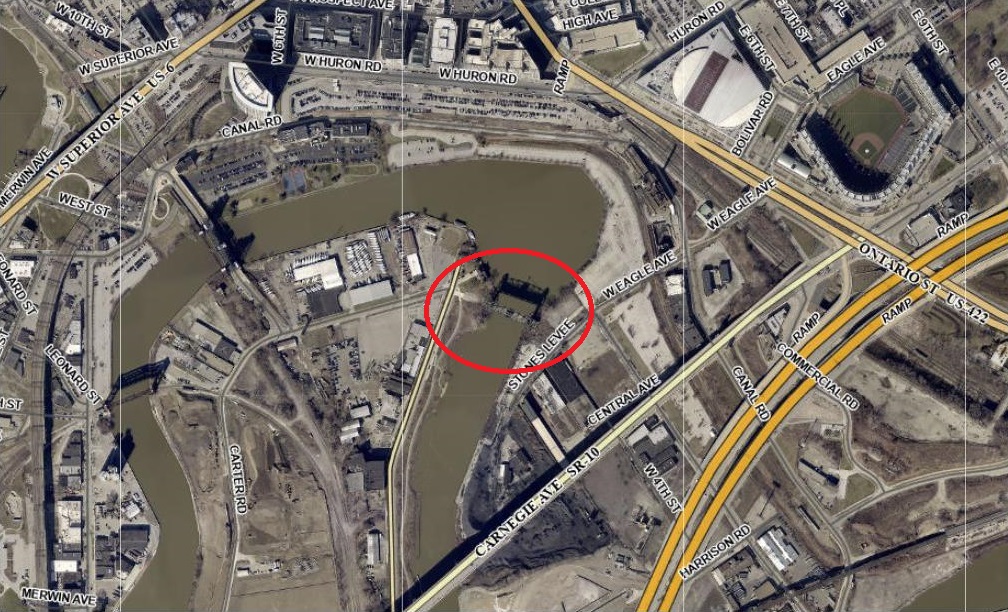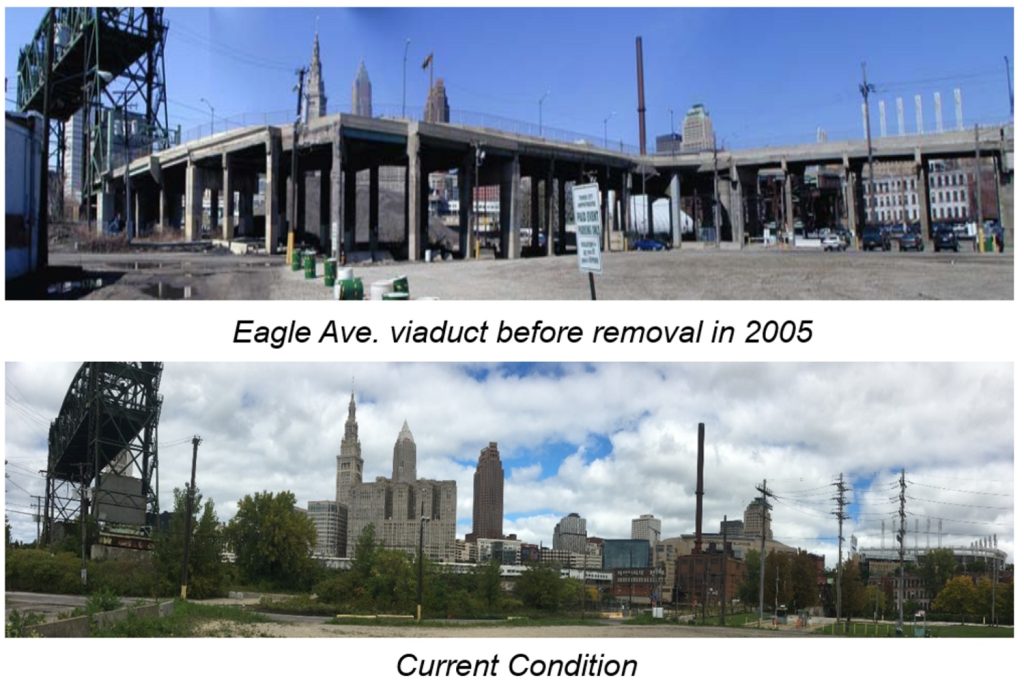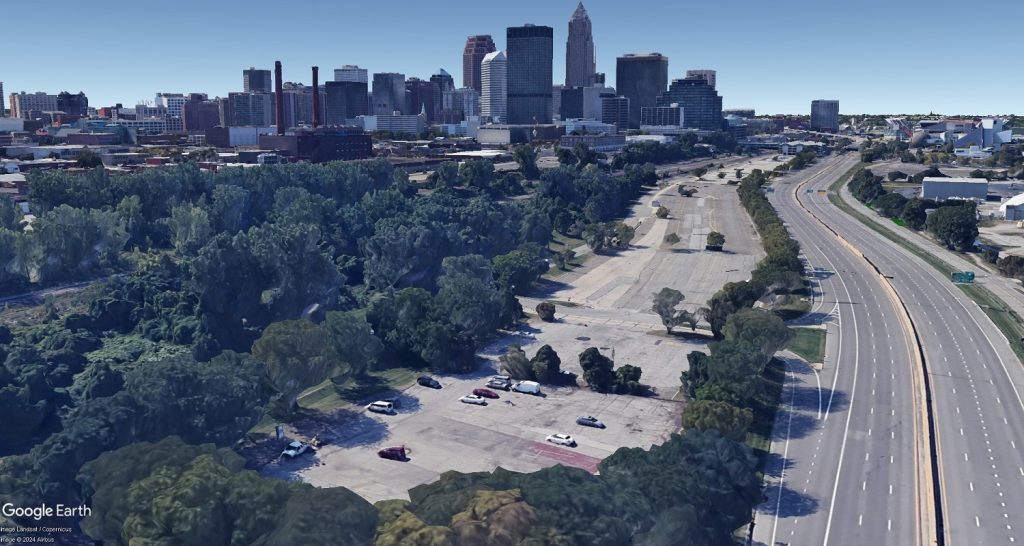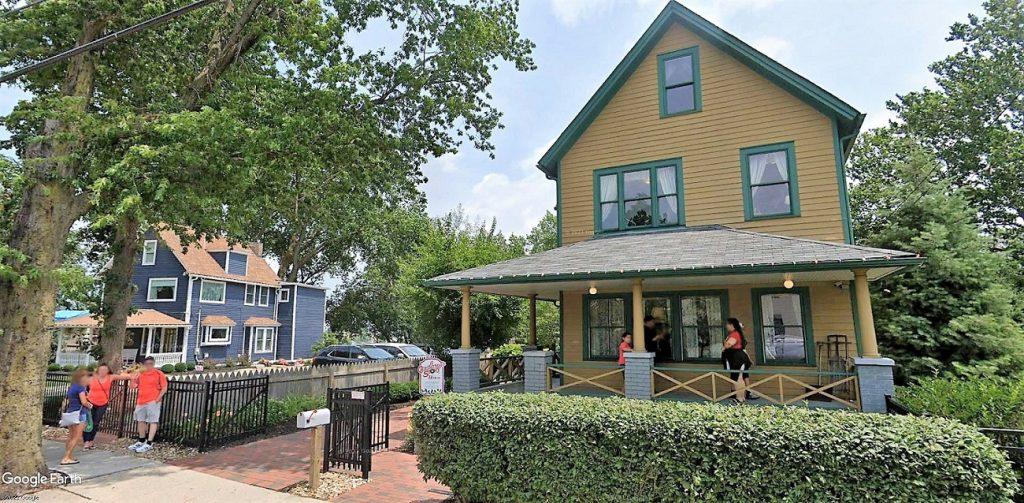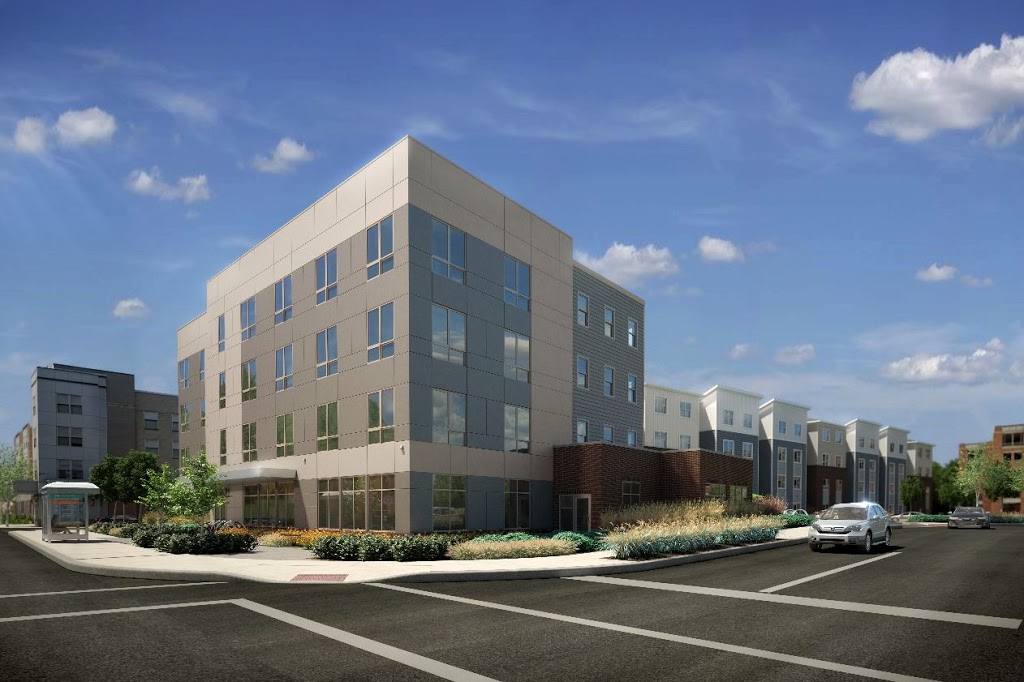
The Eagle Avenue lift bridge over the Cuyahoga River in the Flats is due to be demolished as early as next year according to public records. As of right now, there appears to be no documented plans to replace the bridge with a new one to link Scranton Peninsula to downtown Cleveland (Google). CLICK IMAGES TO ENLARGE THEM.
No plans to replace the 92-year-old bridge
According to public records, the city of Cleveland is seeking to demolish the Eagle Avenue lift bridge over the Cuyahoga River as early as next year. There are no plans to replace the city-owned bridge which links a rapidly developing Scranton Peninsula in the Flats with downtown’s Gateway District and its venues for the Cleveland Guardians and Cleveland Cavaliers.
The city is proposing to demolish the bridge without replacement as the cheapest of four options — demolish it for $3 million; stabilize the existing superstructure and towers for $9.3 million (doesn’t restore the bridge’s east approach); remove, repair and relocate the bridge span as a non-movable truss bridge for at least $29 million; or replacement of superstructure, towers and east approach for $58.87 million, according to an online presentation by the city and the Ohio Department of Transportation (ODOT).
Whatever is done with the Eagle Avenue bridge, it first has to go through a public involvement process because the 1931-built bridge is an historic structure. It was the first vertical lift bridge built in Cleveland — previous movable bridges were either drawbridges that hinged at one end or swung/rotated. According to the Section 106 of the National Historic Preservation Act of 1966 (NHPA), federal agencies must take into account the effects of their actions on historic properties. The agencies involved are the Federal Highway Administration, State Historic Preservation Office, ODOT and the city. Citizens can also apply to become consulting parties via the link shared above or simply share their comments before July 14.
“The bridge has structural deficiencies and poor physical conditions that are continuing to deteriorate, with evidence of trespassing and vandalism,” according a project summary provided by the city. “The project is necessary to address the structural deficiencies of the bridge and related safety issues, while continuing to maintain long-term, safe river traffic below.”
City Engineer Ron Mason did not respond prior to publication of this article to an e-mail from NEOtrans seeking more information.
The Eagle Avenue lift bridge was closed to traffic in 2004 and its movable span locked in the raised position when an ODOT bridge engineer noticed a deteriorating column that supports the span. Soon thereafter, a reinforced concrete viaduct that approaches the lift bridge from the east and a ramp down to West 3rd Street were demolished. That left the lift bridge, whose east end is higher than the west, inaccessible to vehicles, bikes or pedestrians. The city has not maintained the lift bridge since then, said preservation consultant Steve McQuillin.
“It is very unfortunate that the bridge has not been maintained since 2005 and poor oversight should not be the basis for sanctioning demolition, as it rewards neglect of significant historic structures,” McQuillin said. “The Eagle Avenue lift bridge is significant as the oldest vertical lift span in Cleveland, built in 1930-31, and is also notable for its inclined deck and Pennsylvania truss configuration. It is an iconic presence along the river at Collision Bend. Even though it hasn’t been operated in years, the bridge could be stabilized and lighted as a downtown attraction.”
He also questioned the timing of the proposed demolition, which the city suggests could take place after July 2024. More than 600 housing units are under construction on Scranton Peninsula plus new brewpubs that draw traffic to the peninsula’s few streets. And, possibly as early as next year, construction could begin on the first phase of Bedrock’s riverfront development that could add several high rises just north of the Eagle Avenue bridge.
McQuillin noted that Bedrock’s long-range plans for the riverfront include the Eagle Avenue lift bridge but with a new, steeper ramp down from Ontario Street to reach ground level and an intersection with West 3rd. Because the existing lift bridge’s superstructure and movable deck were designed to meet an elevated approach from the east, the existing bridge could not be used to support Bedrock’s development vision anyway. He said a new or redesigned movable bridge span could be provided to accommodate bicycles and pedestrians. That idea was also put forward by another resident.
“If the Eagle Ave bridge were to be replaced, it would be a great opportunity to save money and help continue to turn the area more people friendly by replacing it with a pedestrian/bike-only bridge similar to the Wendy Park pedestrian bridge,” said David Wolfinger of Cleveland. McQuillin noted that there is also a movable pedestrian/bike bridge at North Coast Harbor.
An amount of $2,928,499 for the bridge demolition is included in the Northeast Ohio Areawide Coordinating Agency’s (NOACA) draft 2024-2027 Transportation Improvement Program (TIP) — a collection of all transportation projects in NOACA’s service area. However, the proposed Eagle ramp from Ontario is not listed in the draft TIP nor is any bridge replacement. If a private developer funds a road project on their own it would not be listed in NOACA’s TIP.
The Eagle Avenue lift bridge and its east viaduct approach to it were built as part of the Cleveland Union Terminal project that put Terminal Tower and a major railroad station on Public Square in 1930. Constructing the tracks for the terminal required the demolition of the Smead Rolling Road — a ramp and mechanical device built into the concrete roadbed of Eagle Avenue to help haul wagons up from the Flats to Ontario at the top of a steep hill. Eagle’s new ramp and lift bridge replaced the old rolling road as well as the West 3rd swing bridge linking Canal Road and Scranton Road.
END

